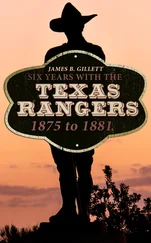“Good morning! We have now landed at Cam Ranh Bay International, where the temperature is 101 degrees and climbing. Welcome to sunny Vietnam!
Please remain seated until the aircraft comes to a complete stop. On behalf of the captain and crew of World Airways, we hope you’ve enjoyed your flight and we hope we… we hope we can fly all of you back home again, safe and sound twelve months from.”
Her voice broke, and she paused, apparently on the verge of tears. Then poignantly, almost bitterly, she said, “We hope you’ll be all rightdamn it.”
As we were about to disembark, a young sergeant, who had befriended the stewardess during the long flight, remarked that the war had claimed a childhood friend of hers only weeks before. She was not at the aircraft’s door as we deplaned.
Things happened quickly at Cam Ranh. Entering a screened inbound/outbound transit facility, we began filing past those who, having completed their year in the Nam, were about to embark on our plane for their flight back to the “world.” In doing so, we suffered their caustic remarks and catcalls.
“Hey, cherry, Charlie’s gonna get ya!”
“Raw meat, raw meat!”
“Hey, cherry, only 365 more days. You’re getting short.”
“Raw meat, raw meat!”
“Hey, chaffy, might as well go and draw your body bag now, ‘cause you ain’t gonna make it.”
And to the tune of Stephen Foster’s “Camp Town Races,” a couple of them sang, off key:
Oh… your son came home in a rubber bag, doo dah, doo dah.
Your son came home in a rubber bag, just the other day.
Oh… you take his watch and I’ll take his coin, doo dah, doo dah.
You take his watch and…
Most of us shouldered these ungracious remarks in sheepish silence as we self-consciously shuffled past our outbound brethern, although a couple of my fellow passengers invited the returnees to go fuck themselves. In the interest of good military order, a somewhat hung-over major who had been aboard our flight pulled a young outbound captain aside and, not so very politely, asked that he exercise whatever leadership influence he might possess in quieting the “obnoxious cluster of people in uniform” surrounding him.
A bit reluctantly, but dutifully, the captain did as he was told, and Nam-bound and world-bound passengers then filed past each other in relative silence.
As we did so, I could not help but notice the very perceptible difference between the two groups of soldiers. Those with me were in most cases pale, soft, and obviously different. Many were overweight; virtually all were sweating profusely in their rumpled, ill-fitted uniforms. Those moving in the other direction were lean, mean, tanned, and toughened by a year of humping a rucksack through the jungles of Vietnam. They looked like soldiers in their faded, starched, and tailored khakis, and they exhibited a palpable air of confidence. And why not? They had succeeded at man’s ultimate competitive folly, that of armed conflict. Who says the Nam is hazardous to one’s health? It certainly isn’t for those who survive it—of course, surviving is the catch.
Cam Ranh’s replacement center was big, hot, sandy, and safe. So safe that our commander and chief, President Johnson, had visited the installation, barely a year before, and lunched with those he was sending into battle. So big that I hardly recognized it as the same deserted stretch of coastal sand onto which we had routinely parachuted back in ‘63, when it was little more than a sleepy fishing village.
In-processing was quick, efficient, and confined largely to record checks and administrative assignment procedures. If one arrived early in the day, he would normally have his in-country assignment that evening and depart Cam Ranh the following morning. I was no exception, and within twenty-four hours of arriving in Vietnam, I was seated aboard a C-130 Hercules, en route to An Khe, home of the First Air Cavalry Division.
If you were to deplane at An Khe in the early fall of 1967, the first thing you’d undoubtedly note would be the Goliath replica of the First Cavalry’s black-and-gold patch painted on the side of Hon Cong Mountain, the predominant terrain feature overlooking the division’s sprawling headquarters at Camp Radcliff. You might next be impressed by the division’s “golf course,” which was not a golf course at all but acres of cleared, rolling terrain upon which the First Cavalry parked its fleet of nearly 450 helicopters, five times as many helicopters as were found in most infantry divisions. The third thing noted, as would probably be the case if you descended on virtually any other U.S. encampment in the country’s central highlands, would be the searing heat and suffocating, reddish clay dust that lay atop everything it couldn’t penetrate.
However, the First Air Cav—the division’s cutting edge—was not located at Camp Radcliff in the early fall of 1967. The division’s fighting brigades were battling Charlie on the Bong Son plain in Binh Dinh Province, an area heavily infested by the Communists for over two decades, and reinforcing the U.S. Marines in I Corps, the northernmost of South Vietnam’s corps tactical areas. With the exception of a single base security battalion, the division’s forces at An Khe were composed of support troops responsible for sustaining the fighting force in Bong Son and I Corps.
An important part of this sustainment responsibility was shouldered by Lieutenant Colonel Know. He assigned incoming officers to the outlying brigades… sometimes.
“Please try to understand, Captain,” Major Bork, Colonel Know’s assistant, said, “we don’t need rifle company commanders out there. We need good staff officers back here… and that’s why you’re being assigned to the G-5 section.”
“Sir, I didn’t come over here to pass out soap and toothpaste,” I replied. “I mean… uh. ‘course all jobs are important, but I’d really prefer a rifle company. So why don’t you just go ahead and send me to one of the brigades and let the next captain who walks through that door do his bit to win ‘hearts and minds’ for you, okay? Mean he’ll probably make a better staff officer, anyway.”
“No can do, Captain. My charter is to fill officer vacancies where they exist, and right now they exist here in division headquarters.
Besides, six months in the field and six months on staff is the norm for our captains. Makes little difference if you pull staff on the front end or rear end of your tour.”
“Makes a difference to me, sir. See, this is my third.”
“Soriy, but the issue is nonnegotiable. Now you just finish up remount and report to the G-5. Do a good job there for six months, and we’ll see to it that you get your fill of the boonies on the down end of your tour. End of conversation.”
Remount school was a shon finishing course for the Cav’s newly assigned officers and NCO’s (noncommissioned officers). Emphasizing aerial insertion techniques that in 1967 were still somewhat unique to an airmobile division (the First Air Cavalry then being the only such division in existence), its curriculum included helicopter rappeling and ladder drills, air-assault techniques, aerial fire support, air movement and logistical support planning, and so on. Upon its conclusion, I reluctantly reported to my new assignment in civil affairs. I couldn’t take it. Three days later I returned to Major Bork’s office, this time to plead my case with Lieutenant Colonel Know himself.
He was most understanding of my plight and talked to me like a father.
“Son, I know how you feel. Hell, wish I were out there commanding one of those battalions. But we’ve both been in the Army long enough to know we go where we’re told to go… go where we’re most needed. And the simple truth is, right now we need good staff officers here at division.”
Читать дальше












